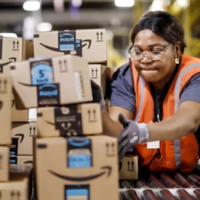Following are remarks by Debbie Berkowitz, NELP’s senior fellow for worker safety and health, delivered at the Consumer Federation of America’s National Food Policy Conference in Washington, D.C. on April 7, 2016:
Good morning. It’s an honor for me to be here. I’m going to focus my remarks on labor practices in the poultry processing industry, how this affects workers and potentially consumers, and why consumers should become involved not only on issues of animal treatment in the industry, but on issues about worker treatment. I think it’s time to not only pressure the industry to assure the humane treatment of animals, but also to assure the industry treats humans they employ in a humane way as well.
The poultry processing industry slaughters and processes 8.5 billion chickens a year. Poultry is now America’s most popular meat. Profits are soaring. For example, Tyson Foods, the largest poultry processor, announced it is expecting record profits. It recently reported $461 million in profits for the three months ending January 2nd of this year.
But for working people in this industry, who make on average of $12.50 an hour, life is a different story. They reap none of the benefits of the success of the industry, yet make all the sacrifices. When it comes to treating its workers, the poultry industry is engaged in a race to the bottom on labor standards.
Working in a Poultry Plant
Poultry plants are one of the harshest environments in all of U.S. manufacturing. In hundreds of plants across the country, concentrated mostly in the southern states, over 250,000 workers in the industry stand shoulder to shoulder on both sides of long conveyor belts, most using scissors or knives, in cold, damp, loud, conditions, making the same forceful cuts or movements thousands upon thousands of times a day, every day, as they skin, pull, cut, debone, and package the chickens. You have heard of assembly plants, such as in auto. These are disassembly plants, where a typical medium-size plant processes 180,000 birds a day. On most lines, a typical workers handle 40 birds a minute (yes, I said a minute). This, like farm workers, is very physically, hard work—never a second to rest as the product keeps coming on the conveyor belt in an unending stream.
Not only is it really tough work, but poultry workers face really serious hazards to their health and safety. The poultry industry dangerously and unnecessarily cuts corners when it comes to taking care of its workers.
If companies are cutting corners on worker safety, what does this mean for food safety?
Workers in poultry plants are injured often—at almost twice the rate as in all private industry. And the incidence rate of work-related illnesses among poultry workers, is almost six times the national average for all U.S. industries. And it is well established that these employer-reported rates are not accurate—they are artificially low. There is substantial documentation of under-reporting by employers in the poultry industry of work-related injuries and illnesses.
Poultry workers face injuries such as amputations from dangerous equipment and musculoskeletal disorders like carpal tunnel syndrome from doing repetitive forceful work. One year ago today, on April 7, 2015, a 17-year-old worker cleaning a machine in a poultry plant in Ohio lost his left leg from the knee down. The company had failed to install a basic safety mechanism. A few weeks before that terrible amputation, a 24-year-old at another plant of the same company in Ohio was cleaning a machine when it cut off the fingertips of his right middle and ring fingers. Hard to believe, but both these workers were then fired—they could no longer do their jobs. This company, by the way, is a leading supplier of fast-food and supermarket chicken—including KFC.
Injured workers are simply fired.
I want to make it clear that these injuries were preventable—they didn’t happen by accident or have anything to do with working people being careless. They would have been prevented if the company had instituted basic—and legally required—safety precautions to protect the workers in their plants.
Workers in the poultry industry also suffer from painful, crippling musculoskeletal disorders of the hand and wrist. In a few government studies, safety research agencies found rates from 30 to 40 percent of production workers.
Morally and Legally Questionable Practices
But instead of protecting workers and implementing legally required safe conditions, the companies adopt morally and legally questionable practices of intimidating workers and discouraging them from reporting injuries and seeking medical care. The poultry business model rests on very high turnover in plants. While at OSHA, we found plants with 100 percent turnover—plants that churn through dozens of new workers every week, as people leave in pain with nowhere to turn. Workers who report injuries are retaliated against or terminated; workers who are hurt and seek medical treatment are never sent to the doctor. OSHA found that companies turn their first-aid stations—where working people seek help for work-related injuries—into places to prevent them from ever reporting an injury.
On top of all this, companies are now spraying disinfectants—acidic chemicals—onto the birds, multiple times throughout the process to kill pathogens. But the spray is not just getting onto the birds, it also gets over the bodies of the workers and causes burns and respiratory illness.
Workers are denied the right to use the bathroom.
And, hard to believe this happens in 2016, but OSHA citations and newly released reports have found that to keep the lines running at all costs, poultry workers are often denied their legal right to use a bathroom. Workers report having to wear diapers or soil themselves at work. It’s abominable and inhuman. OSHA has cited a plant in Delaware—for denying workers access to the bathroom when they need to go. I think it is the only manufacturing plant OSHA has cited for this in years and years and years.
Yet, in this very same plant, and you can’t make this stuff up, the company has decided to treat its chickens better and feed them only vegetarian feed. They won’t allow workers to use the bathroom, forcing them to go on themselves, but they will buy vegetarian feed for the chickens.
But this practice is widespread. In fact, today, the Western North Carolina Worker Center has started a petition campaign to demand that a poultry plant in their area follow the law and allow workers to use the bathroom when they need to.
How Do They Get Away With It?
You may be wondering how companies can get away with all these practices; doesn’t it violate a law? Yes, but the agency in charge of enforcing these laws, OSHA, is small by government standards. It has only enough inspectors to visit all workplaces under its jurisdiction just once in every 100 years. It relies on employers—for the most part—policing themselves.
Another fact, with implications for food safety, is there is almost no paid sick leave in the industry. And of further concern, in many plants, there is no allowable leave at all. Throughout the industry, if workers need to stay home because they are sick, they receive points or demerits. If a worker in the plant accumulates too many points (and this varies by plant, with most workers having no idea how many points are too many) they are fired. The lack of paid sick leave, and the widespread use of putative sick leave policies, often means workers are required to choose between their health and their employment. This has serious implications not only for workers, but may also impact the safety of our food.
A recent survey of poultry processing workers in Arkansas—the state with the largest number of poultry processing plants and headquarters of the nation’s largest poultry processing company, Tysons Foods—found that almost two-thirds of workers (62 percent) reported that they have gone to work while sick. Most workers reported working sick several days in a year, and some had worked sick for as many as one to two weeks.
According to the report: “When asked why they had gone to work sick, 77 percent responded they did not have earned sick leave and needed the money. Over half (54 percent), said they were afraid of disciplinary action if they missed work while sick, and 44 percent reported that they had been directly threatened with discipline or firing if they missed work because of illness. And almost one-fourth (24 percent) of workers surveyed said that they had been fired after missing work due to an injury or illness, even when they provided a doctor’s note.”
Sick workers can infect co-workers and contaminate the food they handle.
Thus, because of the lack of paid sick leave in the poultry processing industry, most workers who are sick (such as with the flu or a serious cold) go to work. This can have serious consequences for workers and consumers: sick workers can infect co-workers, and they can also contaminate the meat they handle at a rate of 40 birds per minute on most processing lines.
What You Can Do
Poultry workers need your help. Many of the practices—no sick leave, putative sick leave policies, not allowing workers to use the bathroom—all may impact food safety. Further, if this industry, which is reaping profits, is cutting corners on worker safety—what does it mean for food safety?
To protect your health and the health of the workers who process the food we eat, the public needs to demand that companies provide access to bathrooms when workers need to go; offer access to prompt and adequate medical care when they get injured or made ill on the job; and adopt paid leave policies as well as allow workers to take sick leave without being penalized. This will no doubt improve worker safety and food safety.




